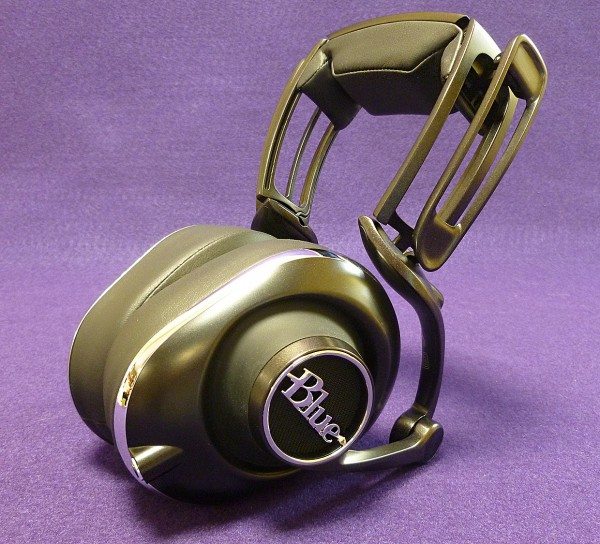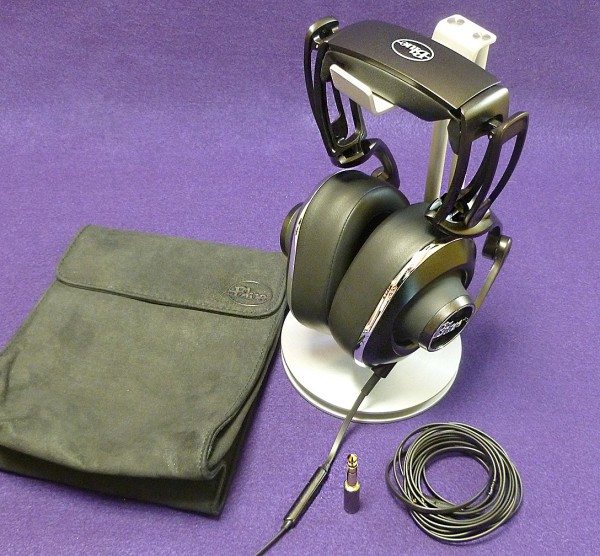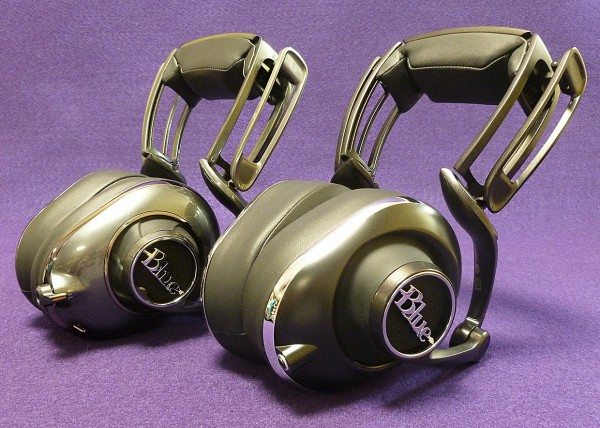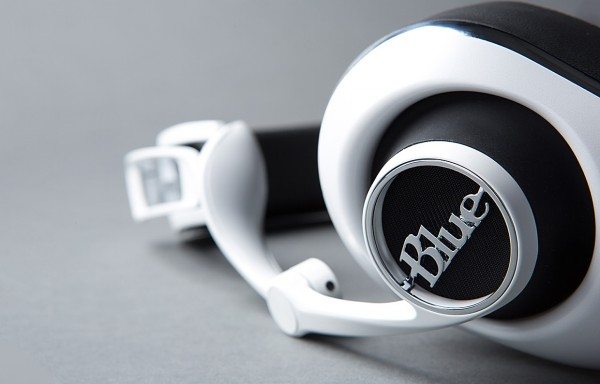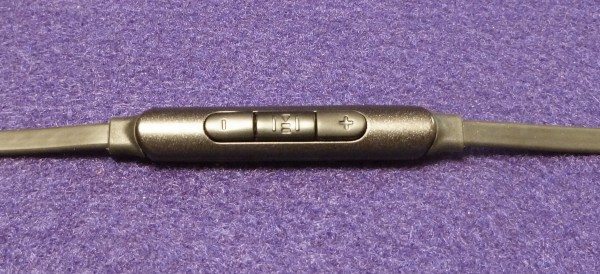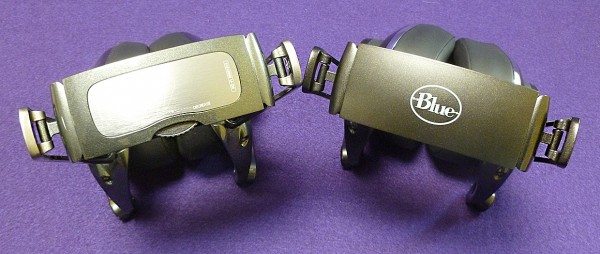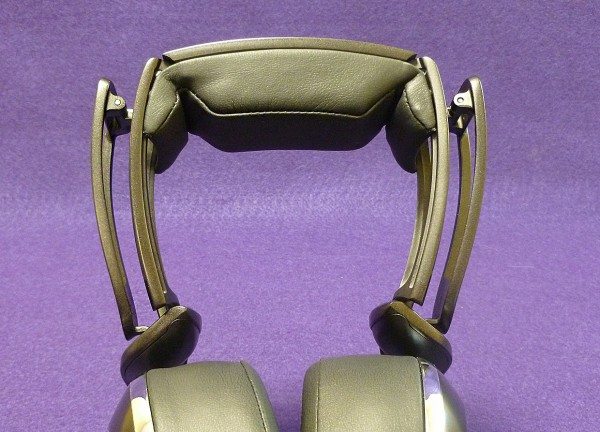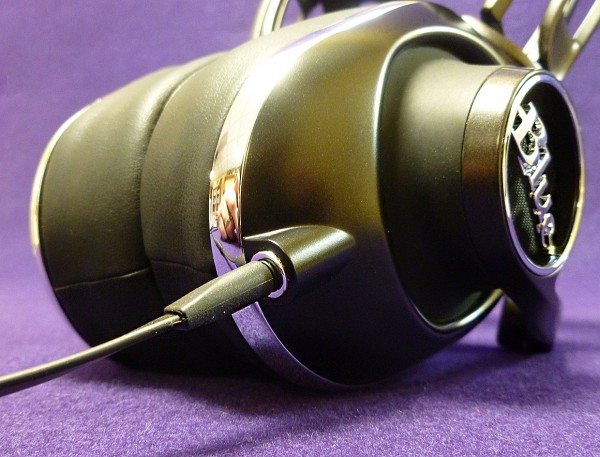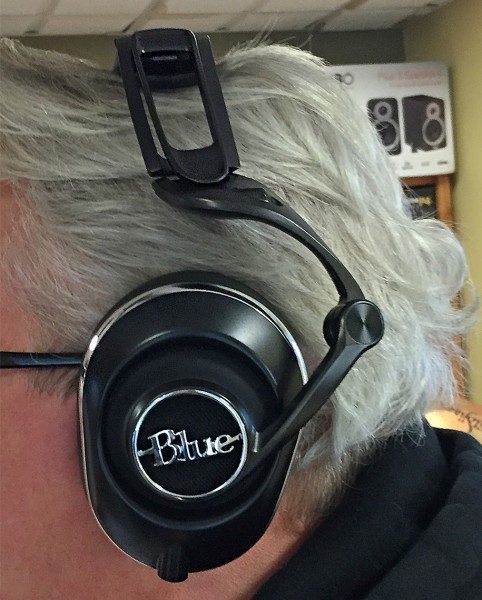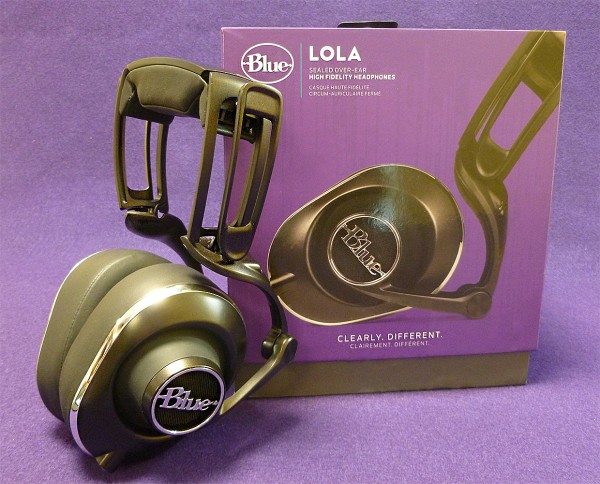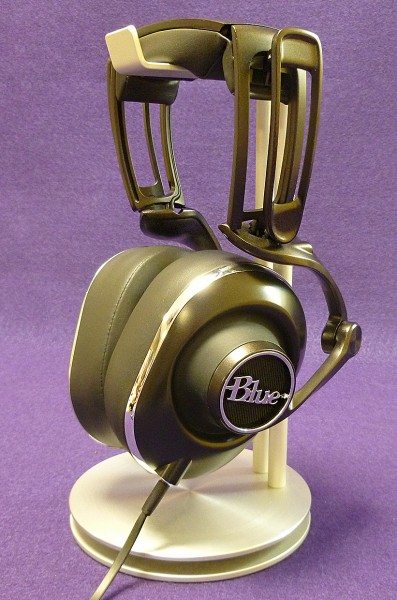Bu-bump … Bu-bump … Bu-bump … The album opened with a heartbeat—a speaker tester of a heartbeat. If I cranked the volume high enough, all kinds of distortion could happen. But it didn’t. What I heard was the recorded heart thumping away along with faint analog tape hiss in the background just before those famous sound effects, mad laughing and screams kicked in. This is how Blue Microphone’s new Lola headphones introduced Pink Floyd’s “Dark Side of the Moon” to me, using only my iPhone with no added amp. Not bad for a headphone that is based on the Blue Microphone Mo-Fi—a headphone famous for its built-in amp.
The Lola is basically a more affordable Mo-Fi headphone minus some goodies such as that amp and a headband tensioner. In my review of the Mo-Fi, I talked about the over-engineered hinge that keeps the headphone parallel to the side of your head, that incredible seal against outside noises and the unusual way the Mo-Fi’s fit is adjusted by angling the ear cups instead of sliding them. The Lola has all of these features. Place the Mo-Fi and Lola side-by-side and it’s almost impossible to tell them apart. However, when picked up , the difference becomes apparent. Minus the amp, the Lola headphones weigh 14 oz. as opposed to the over 1 lb. amped Mo-Fi.
Blue Mo-Fi (left) and Lola (right)
Because the Lola headphones are lighter, they’re easier to wear for extended periods, however I still would not consider them light-weights. I use them strictly for office or home listening. Commuting with them just seems a bit much, especially since they don’t fold. When packed away in their soft carrying pouch, the Lola phones take up as much room as the Mo-Fi phones. They’re very bulky.
The Lola headphones come in two colors: Black or White. I was sent the black ones, although given a choice, I would prefer the richer looking white model. Included accessories are basic and useful: Two removable cables—47 in. with iPhone/iPad controls and mic (Apple only) plus a 118 in. cable for home listening with a 3.5 mm mini plug to 1/4 in. adapter. There’s also a large, soft carrying case mentioned earlier with an interior pocket for storing the cables.
The Mo-Fi headphones had a headband tensioner knob for adjusting how tightly the Mo-Fi was held in place. I never could feel any difference no matter the setting. It was an added complication that was left off the Lola. Good riddance.
You may wonder if the amp left out of the Lola would be missed as much as the useless tensioner knob. That answer is more complicated. If you sat down with both the Lola and Mo-Fi headphones and swapped them listening to the same song, the Mo-Fi will sound fuller and music in general will have more punch, especially when listening from a low-powered smartphone or music player. If just the Lola is used without any direct comparison to the Mo-Fi, the amp may not be missed as much—if at all—since the Lola headphones sound good on their own. So whether the additional $100 for the Mo-Fi with its amp vs the amp-less Lola is strictly judgement call.
Like the Mo-fi headphones, the Lola phones are a closed-back design. Although they don’t use active noise-canceling, you still feel almost completely cut-off from those around you. This is a good thing if you are in an office, at home or on a train or plane—not a good thing on a busy street.
So how do the Lola headphones sound sans amp? Like the Mo-Fi, the Lola leans towards the warm, meaning the bass is potent and the treble is dialed back a bit avoiding harshness or that overly bright, shimmering sound from cymbals that can be off-putting for some. As I stated at the beginning of the review, lack of bass is not an issue as evidenced by Pink Floyd’s heartbeat intro. The good news is that while there is plenty of bass, it does not crowd out the mid or high frequencies. So music never becomes tiring as it can using bass-monster headphones.
The lead-off bass notes from David Bowie and Queen’s “Under Pressure” have grit as each string is plucked. On the Lola headphones, it’s almost visceral in it’s presence. Unfortunately, the feeling disappears as the song builds and the bass becomes just another instrument in the not-so-great post production. The feeling comes back (a little weaker this time) once the bass is solo again at the end of the song.
Only lately have I learned to appreciate The Carpenters—particularly Karen Carpenter’s unique voice. Her brother Richard was a perfectionist in the studio and it shows on songs such as “(They Long to be) Close to You.” With the amount of detail the Lola headphones reveal, her voice exhibits just the right amount of angst as it feels like she is singing right next to the listener. It’s a bit eerie.
At the other end of the musical spectrum, there”s Madonna’s highly processed, but extremely catchy song, “Bedtime Story,” which features a thumping synth beat underlaying her breathy vocals. The song’s illicit atmosphere is heightened by the Lola’s ability to isolate the listener from their surroundings and immerse them in Madonna’s fantasies.
When Blue released the Mo-Fi headphone, they practically created a new direction in what a headphone could become. Since they have taken the basic goodness from the Mo-Fi and distilled it down to the Lola, there is now a fork in that direction. Do I go left with the amped Mo-Fi or right with the less complicated Lola? Either way, you can’t really lose.
Source: The sample for this review was provided by Blue. Please visit their site for more info and Amazon to order.
AMAFACE Wireless Bluetooth Headphones Over Ear, Lightweight HiFi Stereo Headset with Microphone and Waterproof Foldable Bluetooth V5.3 Headphones Wireless for Travel, Computer Laptop, Blue
$21.99 (as of January 4, 2026 11:25 GMT -06:00 - More infoProduct prices and availability are accurate as of the date/time indicated and are subject to change. Any price and availability information displayed on [relevant Amazon Site(s), as applicable] at the time of purchase will apply to the purchase of this product.)LORELEI X6 Over-Ear Headphones with Microphone, Lightweight Foldable & Portable Stereo Bass Headphones with 1.45M No-Tangle, Wired Headphones for Smartphone Tablet MP3 / 4 (Dark Blue)
$19.98 (as of January 4, 2026 11:25 GMT -06:00 - More infoProduct prices and availability are accurate as of the date/time indicated and are subject to change. Any price and availability information displayed on [relevant Amazon Site(s), as applicable] at the time of purchase will apply to the purchase of this product.)Product Information
| Price: | $249.99 US |
| Manufacturer: | Blue Microphones |
| Retailer: | Amazon |
| Pros: |
|
| Cons: |
|

